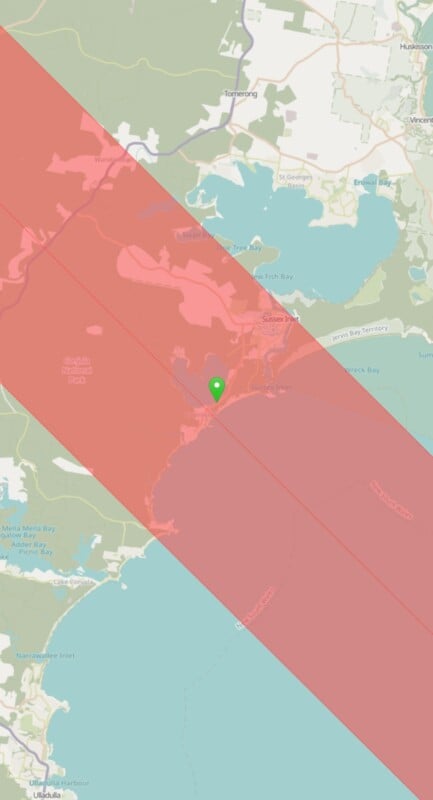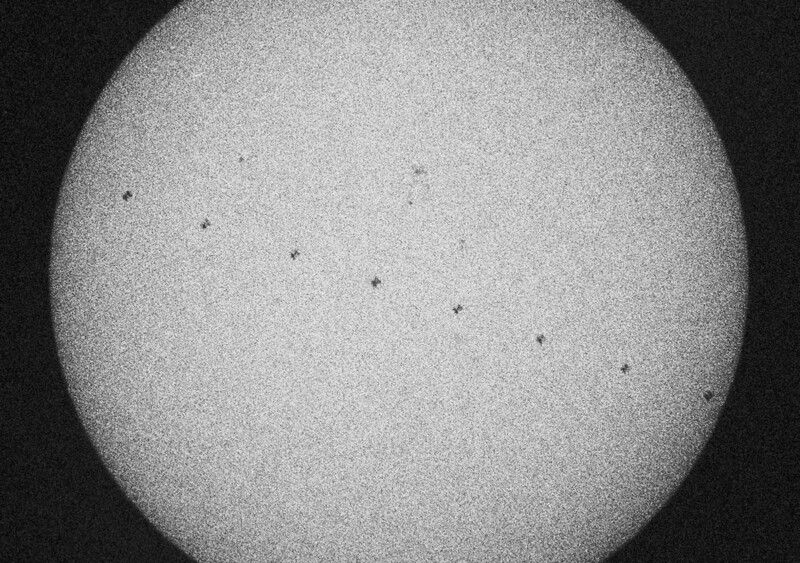Astrophotography is hard enough as it is — but one photographer makes it even tougher by capturing celestial events on 35mm film.
Jason De Freitas was already the first person to capture the International Space Station (ISS) crossing the Moon on film. Now, he’s become the first photographer to capture the ISS transiting the Sun on celluloid.
Getting the Right Equipment
To pull off this groundbreaking feat, De Freitas turned to one of the best 35mm SLR cameras even made: The Nikon F5.
“Since the transit lasted less than a second, I used my Nikon F5 for its high FPS [frames per second] rate,” De Freitas tells PetaPixel. “When using a Nikon MN-30 battery pack, it can shoot film at an impressive eight FPS. Not many 35mm film cameras can beat this.”
To get a tight shot of the Sun, De Greitas used a Celestron Edge HD 8-inch telescope which has a 2000mm focal length. He also used a Celestron Eclipsmart solar filter which he says blocked out a lot of the light.
“I did some test exposures and found that I needed an ISO of 1600 to achieve a fast enough shutter speed of 1/2000. This ensured that I wouldn’t have any motion blur, however, it came at the compromise of coarse grain,” he explains.
“I selected Kodak P3200 as I’ve had good results with it when developed at 1600 and I was confident I would get a result. For future attempts, I will look into different filters that can allow a stop or two more light so that I can use finer grain film.”
Planning
Capturing the ISS making a solar pass requires precision planning, De Freitas had to travel to an exact vantage spot in a coastal area of New South Wales, Australia

“I use the fantastic website Transit Finder to identify opportunities to capture ISS transits and where exactly I need to be,” says the photographer.
“The website can predict transits for the Sun and Moon up to about a month ahead, though the accuracy increases as the transit day approaches nearer.
“While transit opportunities occur often, finding one that happens close to where you live during a convenient time, and when there’s clear weather is trickier than you might think, especially when you have a ‘day job’ during daylight hours.”

Shooting the ISS Crossing the Sun
On March 9, the Universe aligned (quite literally) and from his vantage spot, the ISS crossed the Sun but only for 0.98 seconds.
“One of the biggest challenges in using film for a solar transit is timing. Unlike some Moon transits, you can’t see the ISS in the sky by eye. To time the shot, I had to rely on the time prediction from Transit Finder,” he says.
![]()
The analog astrophotographer only had 36 exposures on his roll of film. Shooting at eight frames per second meant he only had 4.5 seconds of shooting time.
“I aimed to start firing about 1.5 seconds before the predicted transit to give myself a buffer period before and after,” he says.
“In reality, I only had two exposures of the Sun before the ISS began transiting the Sun. A quarter of a second later and I would have missed some frames, talk about cutting it close!”
Capturing a Photography First
De Freitas says he was “thrilled” that he was able to resolve the solar panels in the silhouette of the ISS. He combined all eight photos into one composite shot.
![]()
“While the ISS has been in orbit for over two decades, it surprises many people that transit shots of the space station in front of the Sun or Moon were never taken on film,” he adds.
“In my research of early transit photographs, they have all been taken on digital sensors. To my best knowledge, my ISS Sun and Moon photos are the first ever on film.
“While it’s a fairly arbitrary first, I’m very proud to be able to have done it. The challenge is what drives me to continue my passion for analog astrophotography.”
You can find more of De Freitas’ work on his Instagram and website. You can also purchase his ISS solar transit image as a beautiful print.
Image credits: Photographs by Jason De Freitas
